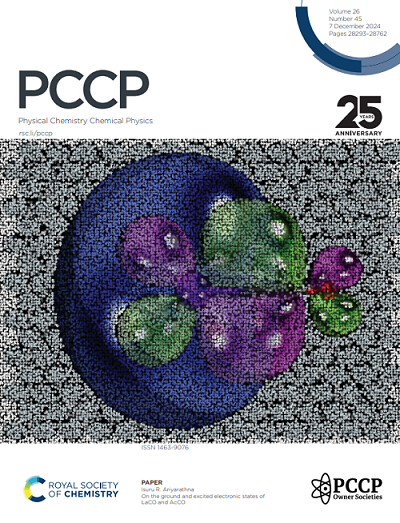Great reduction of hole effective mass in wide bandgap semiconductors by highly mismatched alloying
IF 2.9
3区 化学
Q3 CHEMISTRY, PHYSICAL
引用次数: 0
Abstract
Many wide bandgap semiconductors suffer from large hole effective mass, the inherent defect severely limits their performance. The LiGaSe2, as a direct wide bandgap oxide semiconductor, also faces such challenges. In this work, we present a strategy for valence band engineering of LiGaSe2 by high mismatch O-alloying. Hybrid functional calculations show that semiconductor LiGa(Se1-xOx)2 alloys can greatly reduce their hole effective mass, drastically improving the hole mobility. Specifically, at x = 6.25%, the hole effective mass of the alloy along the Γ-Y direction is only 0.295 m0¬, indicating an approximate 80% reduction compared to LiGaSe2. This physically counterintuitive reduction can be attributed to introducing a small amount of the O-2p orbitals into the valence band, which strongly overlaps with Ga-3d orbitals, forming strong p-d hybridization. Furthermore, the band anticrossing interaction between the O-2p orbitals and the original orbitals pulls down the conduction band, reducing the band gap of the LiGa(Se0.9375O0.0625)2 alloy to 3.037 eV, which is sufficient to maintain excellent visible light transparency. These findings highlight the potential of the semiconductor LiGa(Se1-xOx)2 alloys as transparent conducting materials and offer a novel solution for other similar wide bandgap semiconductors.求助全文
约1分钟内获得全文
求助全文
来源期刊

Physical Chemistry Chemical Physics
化学-物理:原子、分子和化学物理
CiteScore
5.50
自引率
9.10%
发文量
2675
审稿时长
2.0 months
期刊介绍:
Physical Chemistry Chemical Physics (PCCP) is an international journal co-owned by 19 physical chemistry and physics societies from around the world. This journal publishes original, cutting-edge research in physical chemistry, chemical physics and biophysical chemistry. To be suitable for publication in PCCP, articles must include significant innovation and/or insight into physical chemistry; this is the most important criterion that reviewers and Editors will judge against when evaluating submissions.
The journal has a broad scope and welcomes contributions spanning experiment, theory, computation and data science. Topical coverage includes spectroscopy, dynamics, kinetics, statistical mechanics, thermodynamics, electrochemistry, catalysis, surface science, quantum mechanics, quantum computing and machine learning. Interdisciplinary research areas such as polymers and soft matter, materials, nanoscience, energy, surfaces/interfaces, and biophysical chemistry are welcomed if they demonstrate significant innovation and/or insight into physical chemistry. Joined experimental/theoretical studies are particularly appreciated when complementary and based on up-to-date approaches.
 求助内容:
求助内容: 应助结果提醒方式:
应助结果提醒方式:


